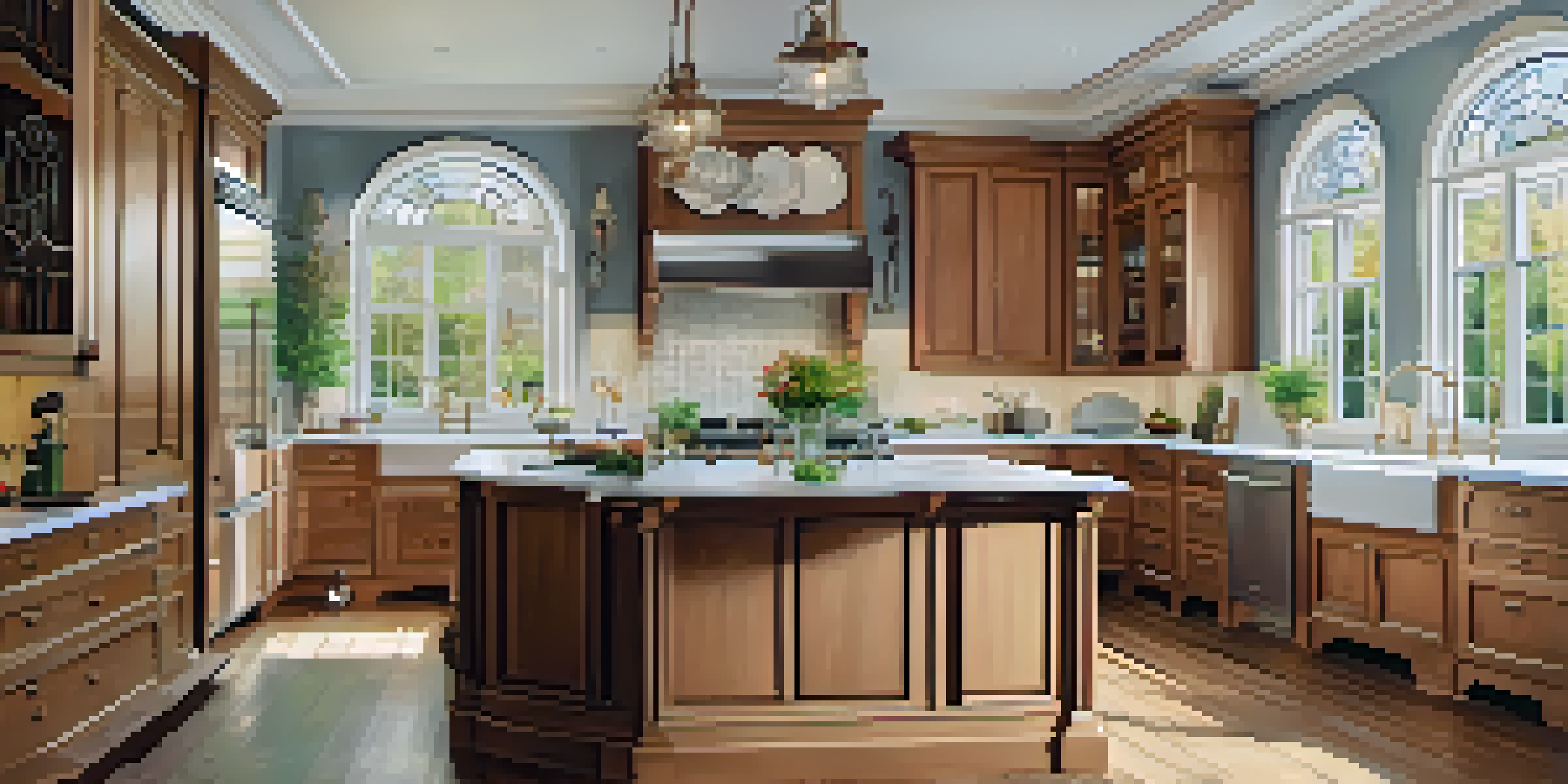Understanding the Role of Architecture in Home Renovation

The Foundation of Home Renovation: Architectural Basics
Before diving into a home renovation, it's essential to understand the basics of architecture. Architecture provides the blueprint for how spaces interact and function together, ensuring that a home is not only aesthetically pleasing but also practical. When considering renovations, grasping these fundamentals can guide decisions that enhance both form and function.
Architecture is the art of how to waste space.
For instance, if you envision an open-concept living area, understanding load-bearing walls and structural integrity is crucial. This knowledge helps you avoid costly mistakes that might compromise your home's safety and stability. Essentially, architecture lays the groundwork for making informed renovation choices.
Moreover, familiarizing yourself with architectural styles can help you maintain or enhance your home's character. Whether your home is a charming craftsman or a sleek modern design, respecting its architectural roots during renovations can elevate the overall aesthetic and increase property value.
Assessing Your Home's Architectural Style
Each home has a unique architectural style that contributes to its charm and character. Before embarking on a renovation journey, take time to assess this style. This assessment will not only inform your design choices but also ensure that any changes you make enhance the existing aesthetics rather than clash with them.

For example, if you own a Victorian-era home, preserving its intricate moldings and ornate details while modernizing the kitchen can create a beautiful blend of old and new. On the other hand, a contemporary home might benefit from sleek, minimalist updates that align with its design philosophy. Understanding your home's style is key to a harmonious renovation.
Understand Architectural Basics
Grasping fundamental architectural concepts helps homeowners make informed renovation choices that enhance both aesthetics and functionality.
Additionally, researching similar homes in your neighborhood can provide inspiration and context. You'll see how others have successfully navigated renovations while honoring their homes' architectural integrity, which can spark ideas for your projects.
The Importance of Professional Architects in Renovations
Hiring an architect can be a game changer in the renovation process. These professionals bring expertise in design, functionality, and building codes, ensuring that your project runs smoothly from conception to completion. They can help you visualize your ideas and translate them into actionable plans.
The details are not the details. They make the design.
For instance, if you’re considering adding a second story to your home, an architect can assess the feasibility, design the addition, and navigate the necessary permits. They can also advise on materials and finishes that align with both your vision and budget, preventing costly oversights.
Moreover, architects serve as valuable mediators between homeowners and contractors, helping to communicate ideas clearly and effectively. This collaboration can minimize misunderstandings and keep the project on track, ultimately saving you time and money.
Integrating Sustainable Practices in Renovation
Sustainability is becoming increasingly important in home renovations, and architecture plays a pivotal role in this shift. Incorporating green practices not only benefits the environment but can also lead to long-term savings on energy costs. An architect can help you design a renovation that maximizes energy efficiency and uses sustainable materials.
For example, adding large windows can enhance natural light, reducing the need for artificial lighting during the day. Similarly, utilizing insulation materials that meet green standards can keep your home comfortable year-round while lowering energy bills. These thoughtful architectural decisions contribute to a more sustainable living environment.
Value of Professional Architects
Hiring an architect ensures compliance with building codes and provides expert guidance, improving the overall success of your renovation project.
Furthermore, sustainable architecture often aligns with modern design trends, making your home both eco-friendly and stylish. By prioritizing sustainability in your renovation, you’re not just improving your home; you’re also making a positive impact on the planet.
Designing Functional Spaces: The Role of Layout
Layout is a critical aspect of architecture that directly influences how we experience our homes. A well-thought-out layout considers traffic flow, natural light, and the relationship between spaces. During a renovation, reevaluating your layout can significantly enhance functionality and comfort.
For instance, if your kitchen feels cramped, an open layout can create a more inviting cooking and entertaining space. Similarly, reconfiguring a bathroom for better accessibility can make a world of difference for family members of all ages. Thoughtful architectural design can transform everyday living.
Moreover, the layout can impact your home’s resale value. Prospective buyers often look for functional spaces that cater to modern lifestyles. Investing in a smart layout during your renovation can not only improve your daily life but also appeal to future buyers.
Navigating Building Codes and Regulations
Every renovation project must comply with local building codes and regulations, and architecture provides the framework for this compliance. Understanding these rules is essential to avoid fines and ensure the safety of your home. An architect is invaluable in this regard, as they are well-versed in local codes and can help you navigate the approval process.
For example, if you're adding onto your home, knowing the zoning laws regarding property lines is crucial. An architect can design your addition to meet these regulations, preventing any legal issues down the line. They’ll also ensure that your renovations adhere to safety standards, which is vital for protecting your investment.
Focus on Sustainable Practices
Incorporating sustainable design elements not only benefits the environment but can also lead to long-term energy savings for homeowners.
In essence, working with an architect not only streamlines the renovation process but also provides peace of mind. You can focus on your vision while they handle the complexities of compliance, ensuring your project is both beautiful and lawful.
Creating a Cohesive Design Vision
A successful renovation is often characterized by a cohesive design vision that unites all elements of the space. This vision should reflect your personal style while considering the architectural features of your home. An architect can help you articulate and refine this vision, ensuring that every aspect of your renovation works together harmoniously.
For instance, if you want to blend modern and traditional elements, an architect can suggest specific materials, colors, and finishes that bridge the gap between styles. This thoughtful approach can create a seamless flow throughout your home, making each room feel connected yet distinct.

Additionally, a strong design vision can guide your choices, making it easier to select furnishings, decor, and landscaping that complement your renovation. With a clear direction, the renovation process becomes more focused and enjoyable, leading to a finished result that truly feels like home.